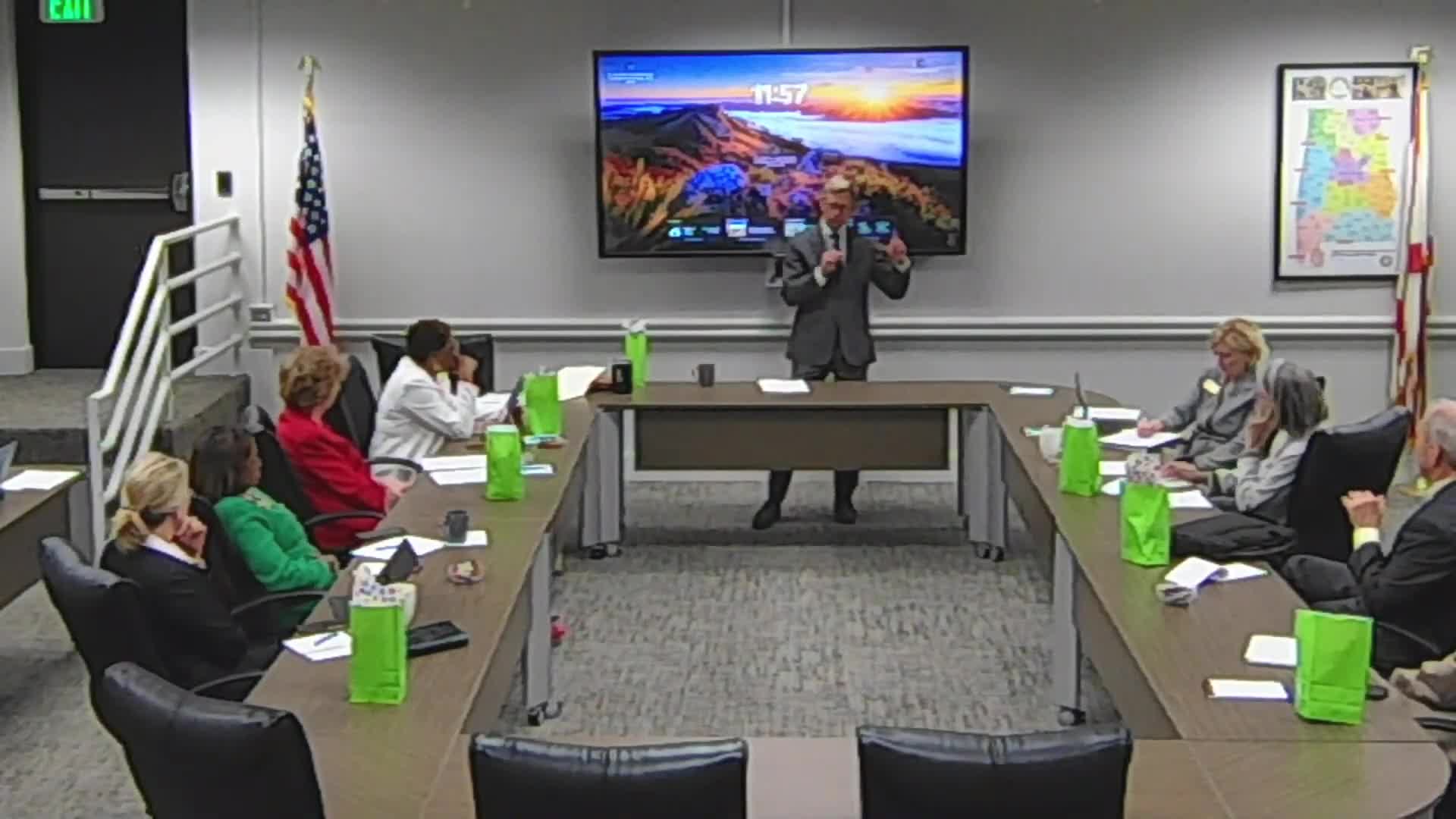School Bus Costs Surge as State Funding Faces Elimination and Tariffs Rise
May 29, 2024 | Alabama State Department of Education, State Agencies, Executive, Alabama

This article was created by AI summarizing key points discussed. AI makes mistakes, so for full details and context, please refer to the video of the full meeting. Please report any errors so we can fix them. Report an error »

In a recent work session of the Alabama State Board of Education, significant concerns were raised regarding the escalating costs of school buses and the implications for local school districts. The meeting highlighted the challenges faced by districts in maintaining and renewing their bus fleets, particularly in light of rising prices and funding limitations.
The current funding model for school buses operates on a 10-year rolling cycle, where districts receive $9,000 annually for each bus that is less than ten years old. However, with the average cost of a new bus now reaching approximately $160,000, districts are struggling to keep up. The discussion revealed that many districts had previously opted not to purchase new buses during economic downturns, leading to a depletion of state funding and a reliance on aging buses that are increasingly costly to maintain.
The meeting underscored the urgency of addressing these financial challenges, as many districts are now facing a potential crisis similar to one experienced 15 years ago. The elimination of supplemental funding requested to help districts rebuild their fleets has compounded the issue, leaving many without the necessary resources to purchase new buses. The introduction of tariff surcharges, which add between $2,500 and $4,500 to the cost of each bus, further exacerbates the financial strain.
Participants discussed potential solutions, including the possibility of statewide purchasing agreements to negotiate better prices for buses. While some districts have successfully collaborated to reduce costs, the lack of a unified state-level purchasing strategy remains a barrier. The conversation also touched on the importance of route consolidation as a means to reduce transportation costs, allowing districts to operate fewer buses while still meeting student needs.
As the meeting concluded, there was a consensus on the need for proactive measures to address the rising costs of school transportation. The board plans to revisit the issue in August, emphasizing the importance of securing adequate funding to prevent districts from falling into debt and to ensure that students have access to safe and reliable transportation. The discussions reflect a growing recognition of the critical role that transportation plays in the overall educational experience and the need for sustainable solutions moving forward.
The current funding model for school buses operates on a 10-year rolling cycle, where districts receive $9,000 annually for each bus that is less than ten years old. However, with the average cost of a new bus now reaching approximately $160,000, districts are struggling to keep up. The discussion revealed that many districts had previously opted not to purchase new buses during economic downturns, leading to a depletion of state funding and a reliance on aging buses that are increasingly costly to maintain.
The meeting underscored the urgency of addressing these financial challenges, as many districts are now facing a potential crisis similar to one experienced 15 years ago. The elimination of supplemental funding requested to help districts rebuild their fleets has compounded the issue, leaving many without the necessary resources to purchase new buses. The introduction of tariff surcharges, which add between $2,500 and $4,500 to the cost of each bus, further exacerbates the financial strain.
Participants discussed potential solutions, including the possibility of statewide purchasing agreements to negotiate better prices for buses. While some districts have successfully collaborated to reduce costs, the lack of a unified state-level purchasing strategy remains a barrier. The conversation also touched on the importance of route consolidation as a means to reduce transportation costs, allowing districts to operate fewer buses while still meeting student needs.
As the meeting concluded, there was a consensus on the need for proactive measures to address the rising costs of school transportation. The board plans to revisit the issue in August, emphasizing the importance of securing adequate funding to prevent districts from falling into debt and to ensure that students have access to safe and reliable transportation. The discussions reflect a growing recognition of the critical role that transportation plays in the overall educational experience and the need for sustainable solutions moving forward.
View full meeting
This article is based on a recent meeting—watch the full video and explore the complete transcript for deeper insights into the discussion.
View full meeting
